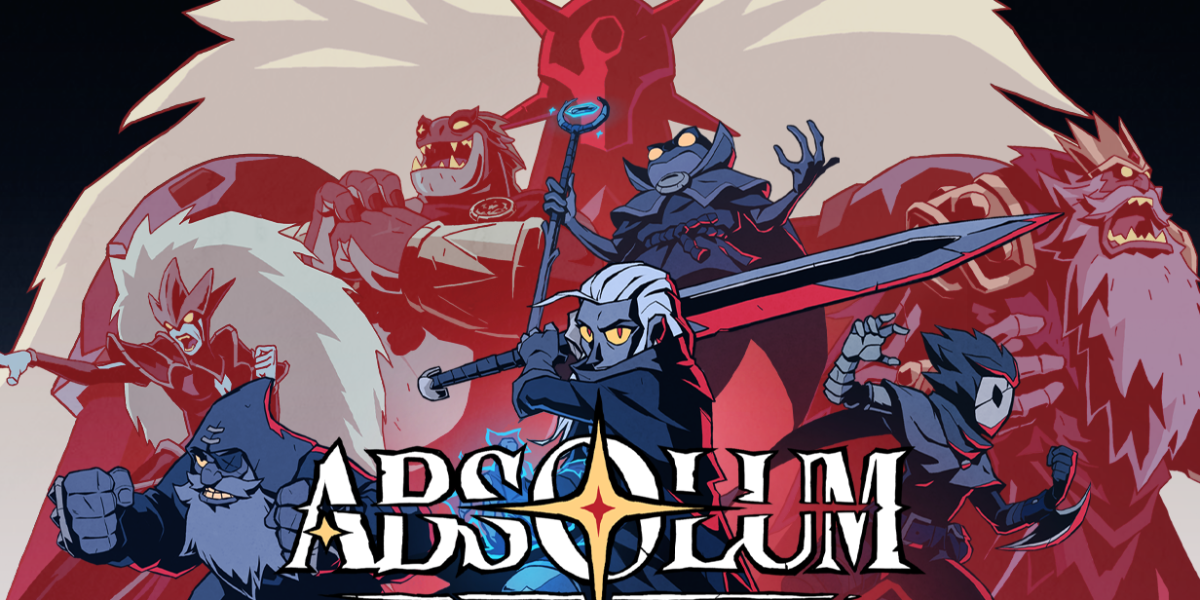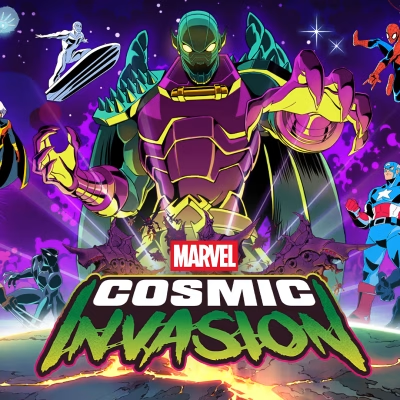Absolum opens like a punchy myth retold around a campfire that happens to be burning inside a coin-op cabinet. The premise is brisk and evocative: in the sundered realm of Talamh, the autocratic Sun King Azra has clamped down on magic after a cataclysm, and a ragtag coalition of outcasts rises to pry that power back. It’s a classic fantasy setup, but Absolum’s trick is how it braids the immediacy of a side-scrolling brawler with a roguelite’s play-again compulsion. Imagine a 1990s arcade marquee spliced with the “die, improve, return” rhythm of modern action-roguelites, and you’re most of the way there. The result feels surprisingly fresh for a genre whose roots go all the way back to smoky arcades.
The first thing you notice is how correctly the game hits. Absolum’s combat has the crisp snap you want from a brawler: quick jabs and wide arcs, launchers and ground bounces, plus a clean dodge that slides you through telegraphed attacks with just enough invincibility to reward nerve. Each playable hero steers the same design philosophy—clear silhouettes, readable wind-ups—but they diverge meaningfully in handfeel. The dwarf bruiser who mixes gun-punches, the graceful greatsword wielder, the twin-dagger skirmisher, and the spell-riding amphibian mage all ask you to commit to different ranges, tempos, and risk profiles.
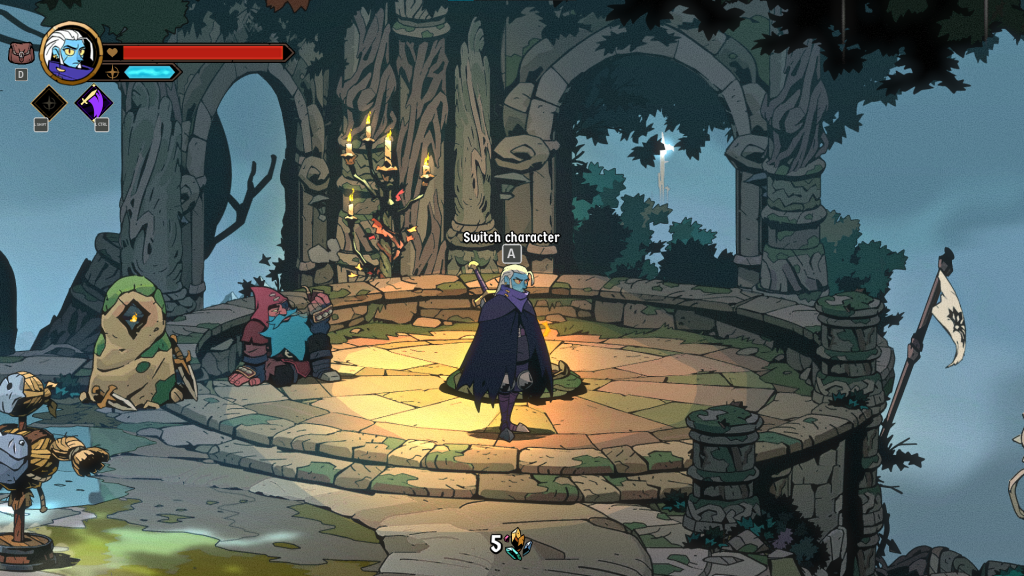
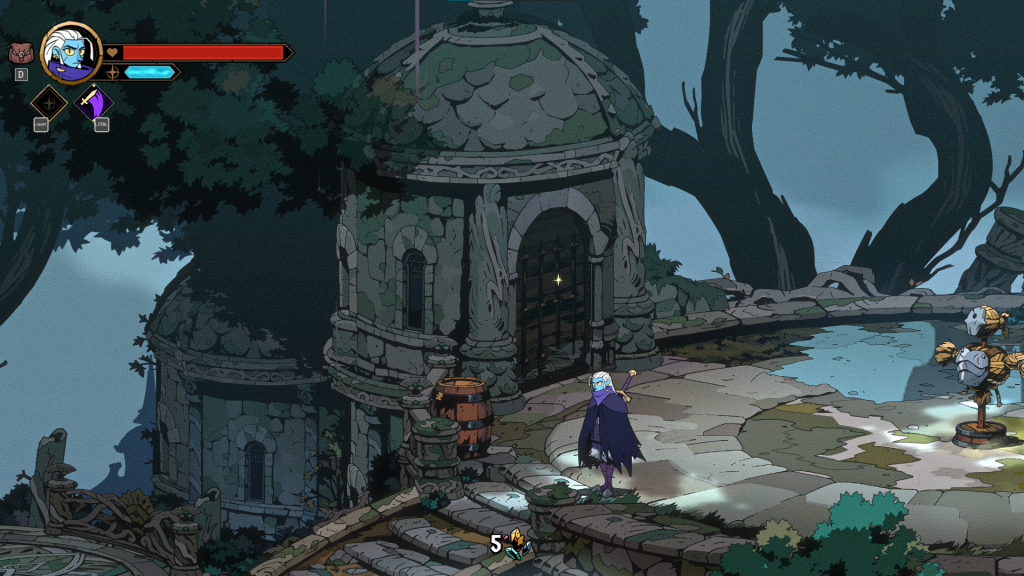
Synergies emerge as you unlock new moves and talismans, and the game’s ritual system spices short-term choices with longer-term progression. It never overwhelms with inputs—the core is light/heavy, directional variations, dodge, and a handful of character-specific tricks—but the space for expression is wide. That balance makes Absolum approachable without neutering mastery, a needle many brawlers miss.
The design of enemies in Absolum shows that they mean business. Regular grunts let you practice your combos and timing, and shield-bearers and spear-throwing gnolls make you move instead of just pushing buttons. Summoners punish people who only look at one thing by spawning threats off-screen, and elite enemies test your spacing skills by using armored strings that eat through sloppy dodges. Boss fights make the whole structure better without ever feeling unfair. Each one is like a song: a simple verse that teaches patterns, a second act that mixes those cues up, and a finale that needs every tool you’ve learned—clean dodges, juggling management, and tight meter control.
Many action games add meta-progression, but Absolum uses it. Runs take place on branching paths that go through different parts of Talamh. Along the way, you’ll find side rooms with merchants, altars to challenge, allies you can save, and optional arenas. Short-term choices (like which boon, route, or fight modifier to accept) affect mid-term investments (like unlocking permanent characters, adding new rituals, or expanding move lists). The buildcraft never takes away from the brawler’s punchy immediacy, which is a common problem when proc effects and number creep turn reading animation into reading spreadsheets. Instead, upgrades usually make things more stylish, like adding a fiery ender, extending a launcher’s juggle window, or changing a dodge counter into a parry that gives back meter.
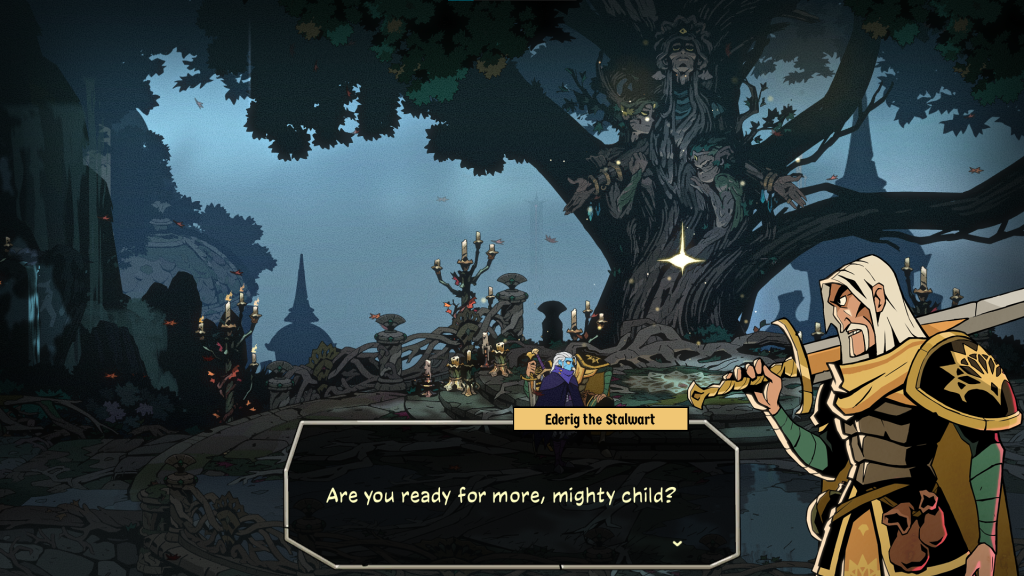
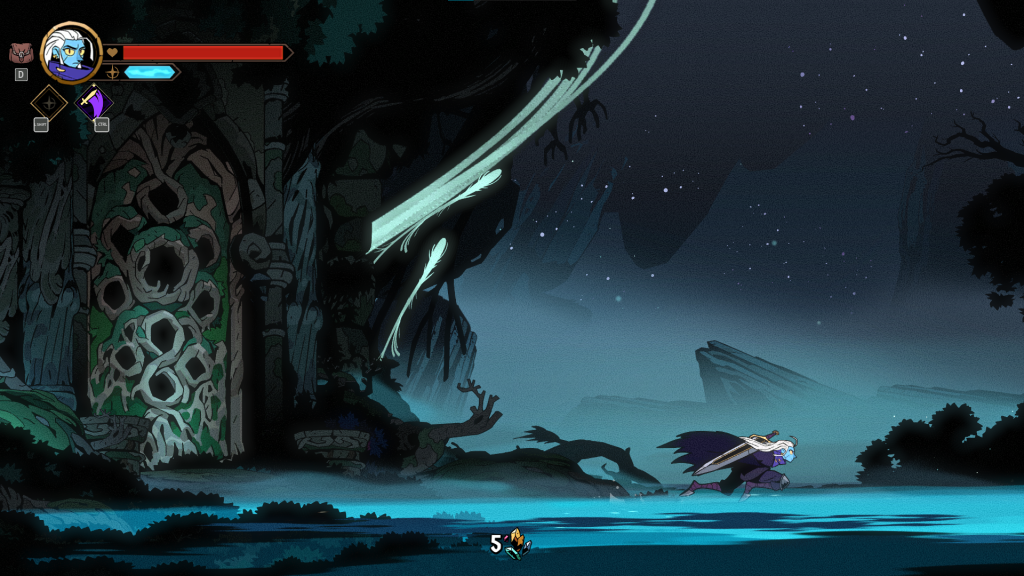
Absolum’s story isn’t a lore dump; it’s an impression made through backgrounds, encounter design, and the people who help or hinder you. Each region communicates who rules it and why that rule is rotten. Jaroba’s arenas and saurian banners speak to the Lizard King’s bread-and-circuses grip. Ruined villages, rootlike cathedrals, and shrines to the mother-mage Uchawi stitch a cosmology at the edge of your periphery. NPCs—rebels, scholars, opportunists—surface between bouts to trade, bicker, or dare you into side objectives that ripple across future runs. You feel like you’re entering an ongoing struggle rather than kicking off a brand-new prophecy, which gives the action weight without bogging it down.
You can play Absolum alone or with a friend, either in person or online. The co-op ceiling is a design choice that makes it easier to read the screen, keeps damage sponge health bars from getting too high, and keeps movement important. The reward is real. Duos can run kits that work well together, like a control-heavy spellcaster pinning lines while a melee specialist shreds priorities, or they can double down on burst to take out elites. Revive windows and shared risk add just enough tension to the team to make them shout things like “peel,” “reset,” and “cash meter now!” in the middle of a fight without getting in the way. If you want to see three or four players in chaos, you might think the cap is a missed chance. For me, two is where Absolum’s choreography looks best.
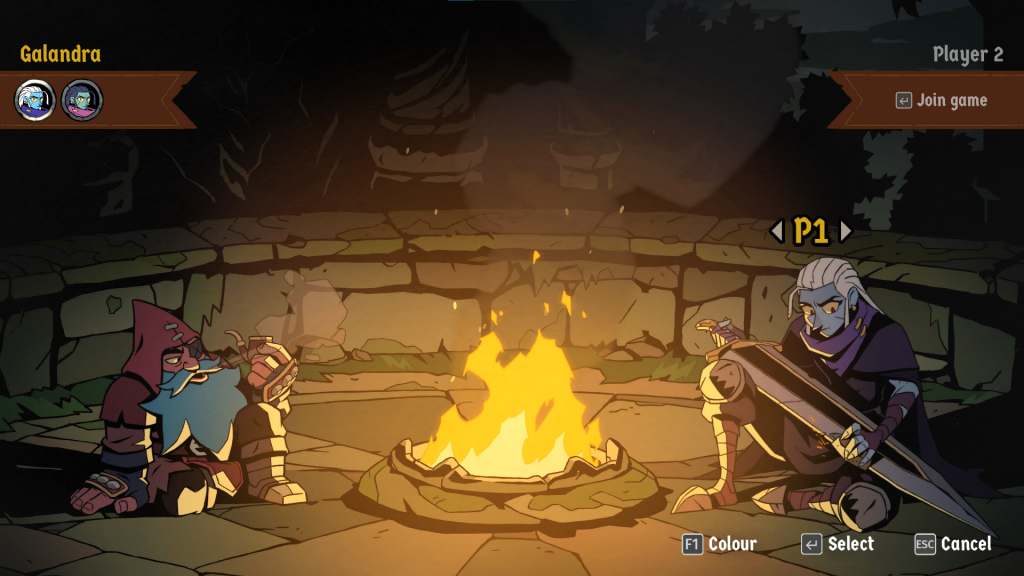
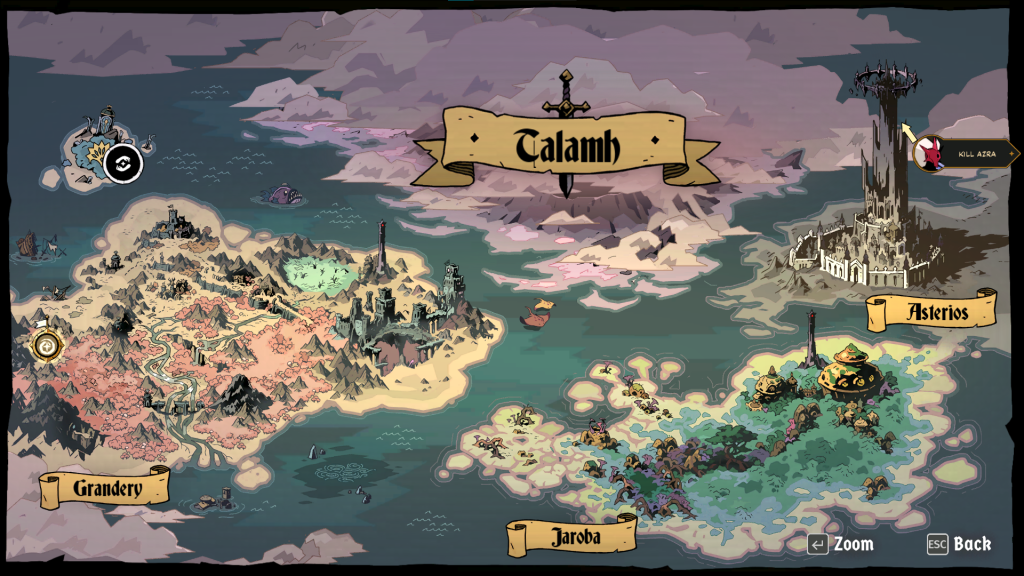
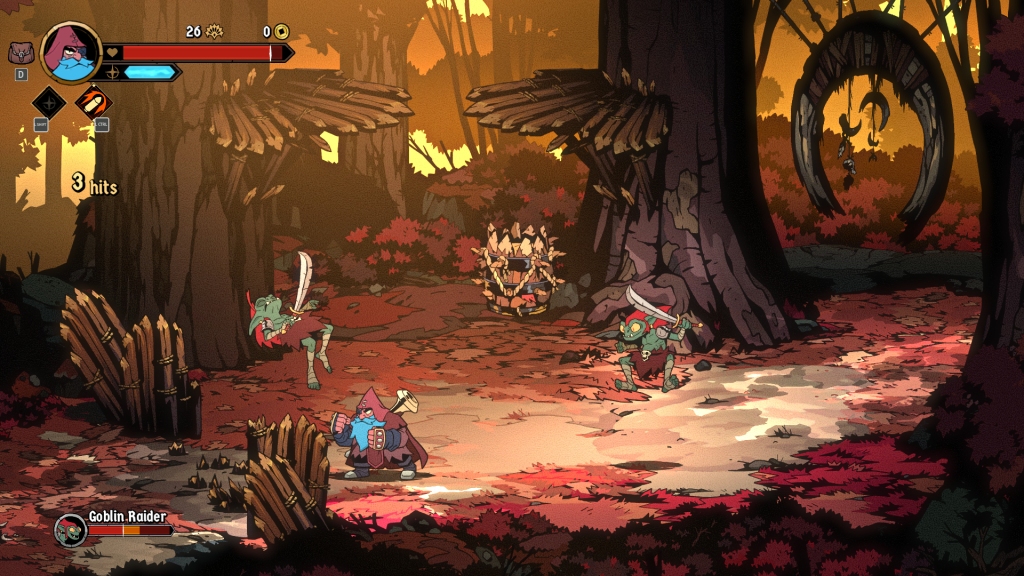
A typical push goes from an opener that isn’t too hard to a midgame where the build comes together, and then to late-game gauntlets where the margins for error get smaller. Absolum keeps zones small, so “just exploring” doesn’t often turn into aimlessness. Optional rooms create small stakes: do you risk a modifier for the chance at an epic ritual, or do you save your health for the boss? There are hidden chests and quest hooks that reward thoroughness without turning into pixel hunts. The map also branches, so you can avoid enemies that give you trouble, but you’ll lose out on rewards. If you play well, the game will give you a lot of chances to recover, but it won’t give you anything for free. You have to earn your way back from the edge by dodging and dumping your meter wisely.
Absolum looks more like an animated graphic novel than a pixel throwback. Sprites are big, expressive, and have a lot of animation. Their unique silhouettes help you see threats out of the corner of your eye. Parallax layers make stages look almost like dioramas. For example, markets full of pennants, swamps with drifting spores, and palatial promenades where the marble shines in contrast to the dirt on the street. The effects are hand-drawn but still easy to read, and particles flare without blocking tells. UI is in the sweet spot: you can read it without it being too loud over the art direction. The game looks like a Saturday morning serial when it’s moving, but the lines are sharp enough to look good on a 4K screen. Early reviews of the console have praised this “moving comic” look as one of its best features, and I tend to agree.
Absolum looks stable and smooth on PC and current consoles. At 60 frames per second, inputs feel tight, animations blend together smoothly, and loading times are short. The art style can handle dips in resolution, but it’s very sharp on good hardware. The quality of online co-op depends on the connection, but the rollback feel is good for a game where timing is important. There is the expected scaling of effects density and occasional frame pacing wobble in the busiest scenes on the Switch. However, the handheld delivery holds together, and the art really pops on a smaller screen. The studio pedigree behind Absolum—teams that worked on recent, well-tuned brawlers—shows in the baseline responsiveness and the measured post-demo improvements that early players noticed.
Absolum is a rare brawler that knows why people fell in love with the genre in the first place and then makes a modern home for it. The hits are good, the runs don’t waste your time, and the world makes you want to know more by what it doesn’t say too much about. If you play by yourself, you’ll find a well-tuned action game that rewards practice and trying new things. If you bring a friend, you’ll find a co-op experience that is twice as dramatic and still easy to read. The art direction is sure of itself, the music is lively without being too much, and the structure makes “one more run” a flexible phrase that can last well into the night. For fans of old-school beat ’em ups, Absolum is a celebration. For players who grew up with modern roguelikes, it’s a way to get back into a genre that’s older than most of us but still exciting. In any case, it’s one of the best things that happened this year.



